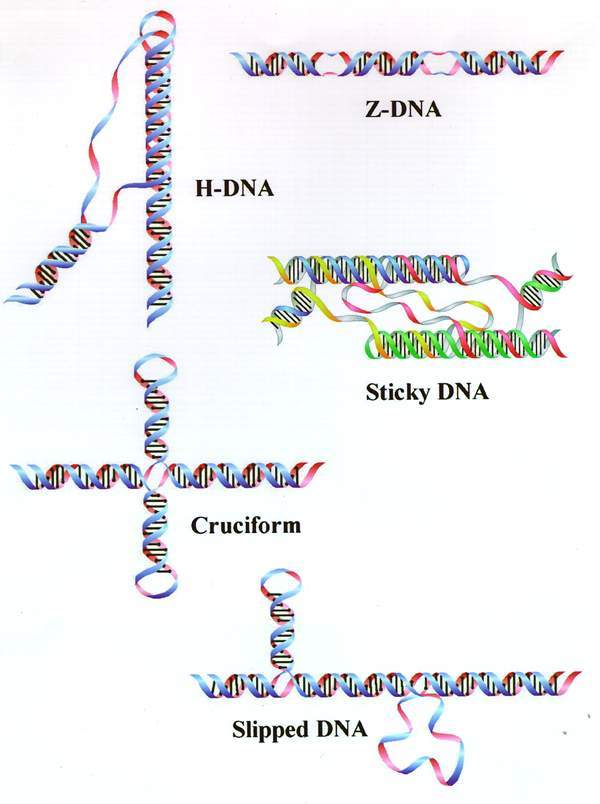From: Molecular Mechanisms of TRS Instability

NCBI Bookshelf. A service of the National Library of Medicine, National Institutes of Health.

Non-B-DNA structures. Depending on the local base composition and the symmetry of a sequence, DNA may adopt various conformations including left-handed Z-DNA (alternating purine-pyrimidines such as d(GC)n), triplexes (polypurine/polypyrimidine tracts with mirror symmetry), “sticky” DNA (association of two separate triplexes), cruciforms (arising from self-pairing inverted repeats) or slipped DNA which may form basically within any direct repeats.
Animation depicting the formation of triplex and “sticky” DNA structures is available at http://www.tamu.edu/ibt/ibtweb/stickydna.htm. Reproduced from refs. 5 and 7 with permission.
From: Molecular Mechanisms of TRS Instability

NCBI Bookshelf. A service of the National Library of Medicine, National Institutes of Health.